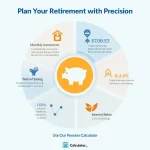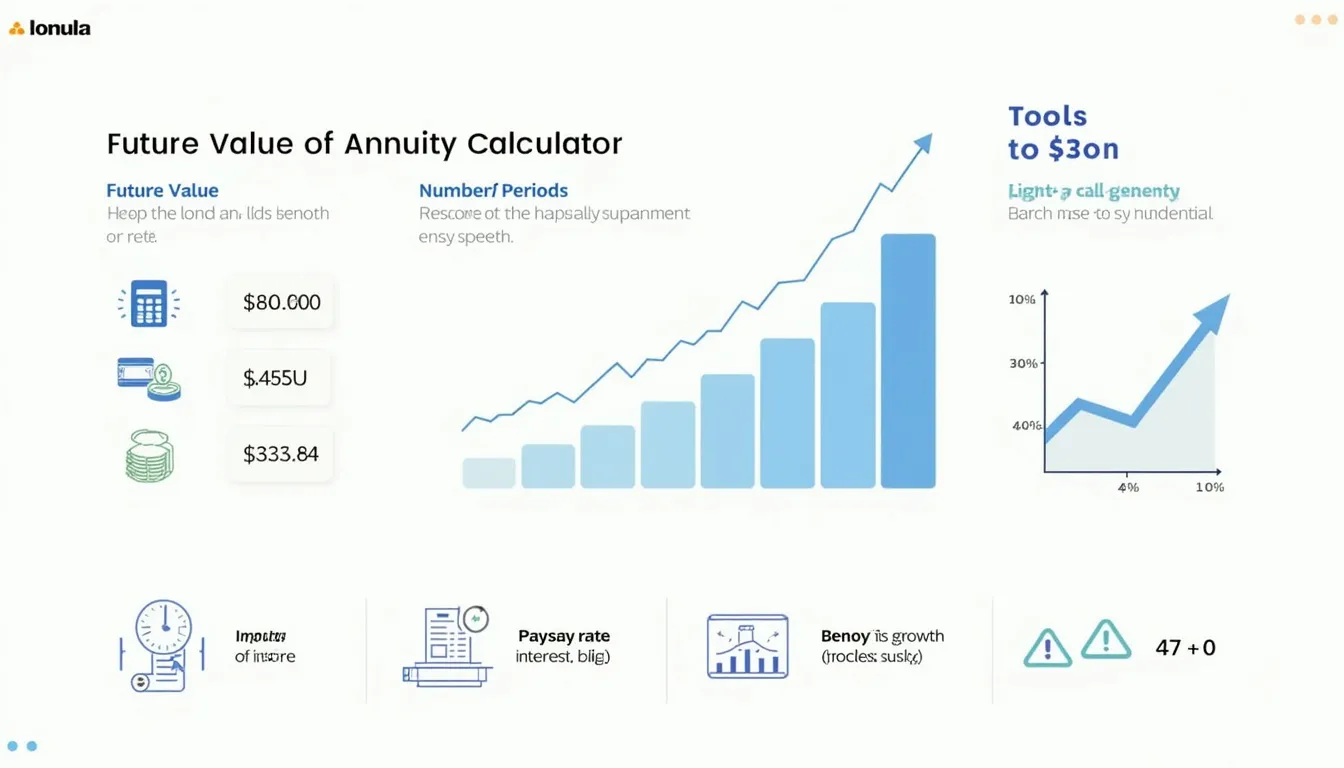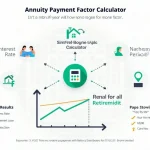Future Value of Ordinary Annuity Calculator
Is this tool helpful?
How to use the tool
- Enter your periodic payment. Example 1: $250 every month. Example 2: $900 every quarter.
- Add the number of periods. For 5 years of monthly deposits type 60; for 8 years of quarterly deposits type 32.
- Type the effective interest rate %. Try 4.0 % or 6.25 %.
- Press Calculate. The script applies the formula below and shows your future value.
- Tweak inputs to test raises, longer horizons, or higher yields.
Formula used
For an ordinary annuity paid at each period-end:
$$ FV = P \times rac{(1 + r)^n – 1}{r} $$- P = periodic payment
- r = interest rate per period (decimal)
- n = number of periods
Worked example 1
Deposit $250 monthly, 60 periods, 4 % annual → 0.003333 per month.
$$ FV = 250 \times rac{(1.003333)^{60}-1}{0.003333} \approx \$16{,}575 $$
Worked example 2
Deposit $900 quarterly, 32 periods, 6 % annual → 0.015 per quarter.
$$ FV = 900 \times rac{(1.015)^{32}-1}{0.015} \approx \$36{,}070 $$
Quick-Facts
- Standard formula appears in Brigham & Ehrhardt, “Financial Management” (2022).
- Payment and compounding periods must match (CFA Institute, 2023 Curriculum).
- Average U.S. inflation was 3.2 % over 2003-2023 (BLS CPI, https://www.bls.gov/cpi).
- 401(k) illustrations often assume 5-8 % returns (U.S. DOL, Pub. 2022-02).
- FDIC lists average savings rate at 0.58 % (FDIC National Rates, 2023).
FAQ
What is an ordinary annuity?
An ordinary annuity pays equal amounts at each period’s end; mortgage or 401(k) contributions are common examples (Investopedia, https://www.investopedia.com).
How does compounding raise my future value?
Each payment earns interest, and that interest earns more interest—called compound growth—boosting returns exponentially (SEC Investor.gov, 2023).
How does an ordinary annuity differ from an annuity due?
An annuity due collects payments at period start; it finishes with about 1 period’s extra growth versus an ordinary annuity (CFA Institute, 2023).
What if the interest rate equals zero?
The growth term disappears; future value becomes simple sum = P × n, with no earnings added.
Can I mix payment and compounding frequencies?
Only if you convert the rate to match the payment interval using effective-rate formulas (Garman & Forgue, “Personal Finance”, 2021).
How do taxes and inflation affect results?
Taxes reduce earnings, and inflation erodes real buying power; adjust inputs or apply after-tax, after-inflation rates for realism (IRS Pub. 550, 2023).
What happens when payments increase over time?
The current calculator assumes level payments; for growing deposits use a future-value-of-growing-annuity model (Brigham, 2022).
Is the formula valid for very high rates?
Yes, but extreme rates amplify rounding errors; use more decimal places or financial software for accuracy above 20 %.
Important Disclaimer
The calculations, results, and content provided by our tools are not guaranteed to be accurate, complete, or reliable. Users are responsible for verifying and interpreting the results. Our content and tools may contain errors, biases, or inconsistencies. Do not enter personal data, sensitive information, or personally identifiable information in our web forms or tools. Such data entry violates our terms of service and may result in unauthorized disclosure to third parties. We reserve the right to save inputs and outputs from our tools for the purposes of error debugging, bias identification, and performance improvement. External companies providing AI models used in our tools may also save and process data in accordance with their own policies. By using our tools, you consent to this data collection and processing. We reserve the right to limit the usage of our tools based on current usability factors.







